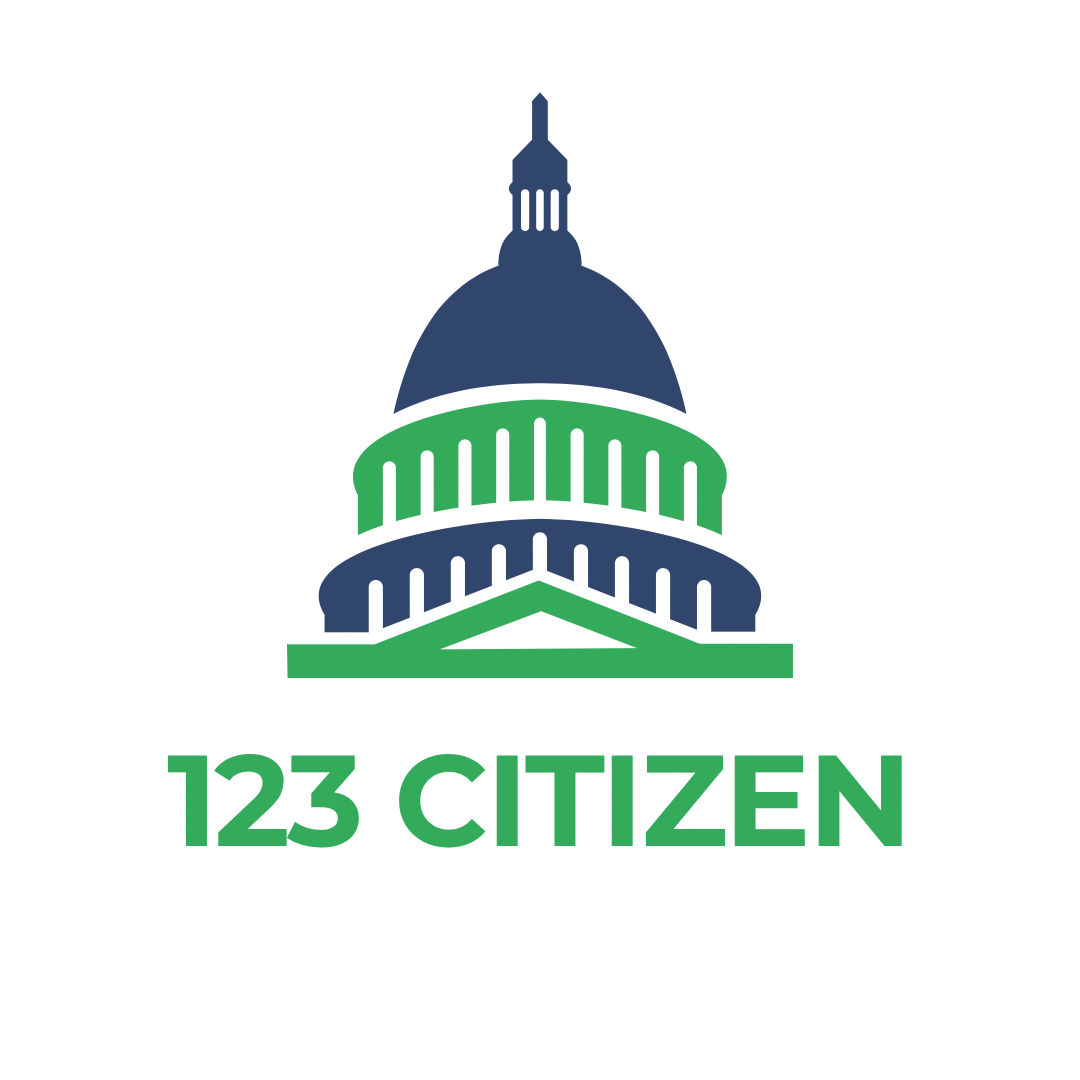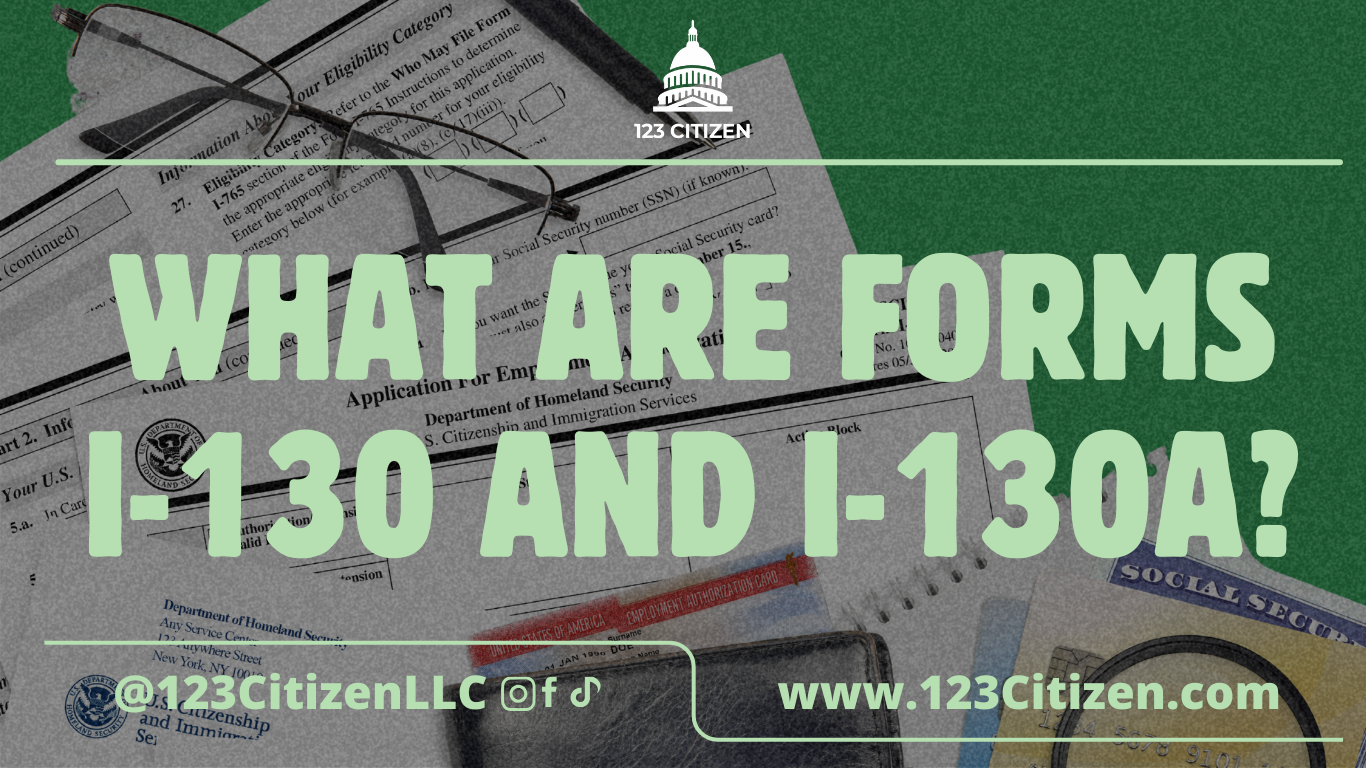What are Forms I-130 and I-130A?
If you’re a U.S. citizen or lawful permanent resident and want to help your family member move to the United States, Form I-130 is the first step in the process. This form helps establish that you have a qualifying family relationship with the person who wants to immigrate.
At 123 Citizen, we know how important it is to keep families together. That’s why we’re here to explain these forms in simple, clear language so you can feel confident about starting your process.
What is Form I-130?
Form I-130, Petition for Alien Relative, is filed by a U.S. citizen or lawful permanent resident (Green Card holder) to prove a family relationship with certain relatives who want to immigrate to the United States.
Who can you petition for?
If you are a U.S. citizen, you may petition for your spouse, children, parents, and siblings.
If you are a lawful permanent resident, you may petition for your spouse and unmarried children.
📌 Important: Approval of Form I-130 does not give your relative legal status, a Green Card, or work authorization right away. It only confirms that the family relationship is valid.
What is Form I-130A?
If you are petitioning for your spouse, USCIS also requires Form I-130A, Supplemental Information for Spouse Beneficiary.
This form provides additional background details about your spouse.
If your spouse lives abroad, they still need to complete Form I-130A, but they don’t have to sign it.
When to File Form I-130
Form I-130 should be filed regardless of whether your family member is inside or outside the U.S.:
If your relative is inside the U.S.: Immediate relatives of U.S. citizens (spouses, unmarried children under 21, and parents) may be able to file Form I-485 (Adjustment of Status) at the same time as Form I-130. This is called “concurrent filing” and can save time.
If your relative is outside the U.S.: After USCIS approves Form I-130, the case will be sent to the National Visa Center (NVC), and your family member will file Form DS-260 (Immigrant Visa Application) through the U.S. consulate.
How Long Does it Take?
Processing times vary widely:
For Immediate Relatives of U.S. citizens, visas are always available, and the process is usually faster.
For Family Preference categories (like siblings or married adult children), there are yearly limits, and wait times can range from several months to several years depending on visa availability.
What Documents Do You Need?
According to USCIS, you must submit proof of your status and your family relationship:
If you are a U.S. citizen: birth certificate, naturalization certificate, or U.S. passport copy.
If you are a Green Card holder: a copy of your Permanent Resident Card (Green Card).
Evidence of the family relationship (e.g., marriage certificate for a spouse, birth certificate for a child, etc.).
💡 Tip: For marriage-based petitions, USCIS may ask for extra proof that the marriage is real (like joint bank accounts, leases, or photos together).
How 123 Citizen Helps You
Filing Form I-130 and I-130A can feel overwhelming — but you don’t have to do it alone.
At 123 Citizen, we make the process easier by providing:
✅ Step-by-step guidance for every form
🗂️ Easy-to-follow checklists of required documents
💬 Support in English and Spanish
🔒 Peace of mind knowing your petition is accurate
Ready to Begin?
Start your family immigration process today with the support of 123 Citizen.
📲 Visit 123Citizen.com to check your eligibility and get started.
💬 Questions? Message us on WhatsApp — hablamos español.

